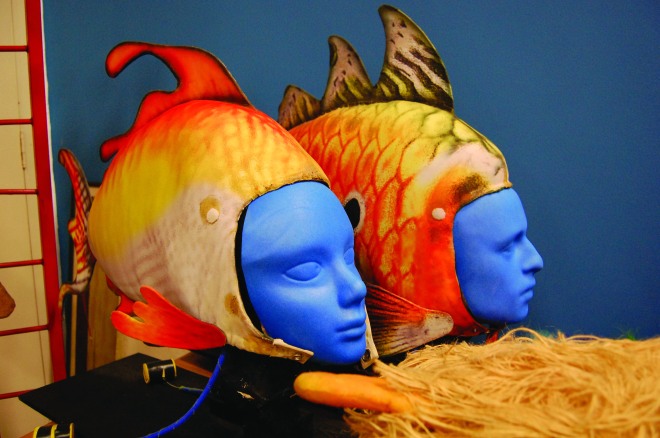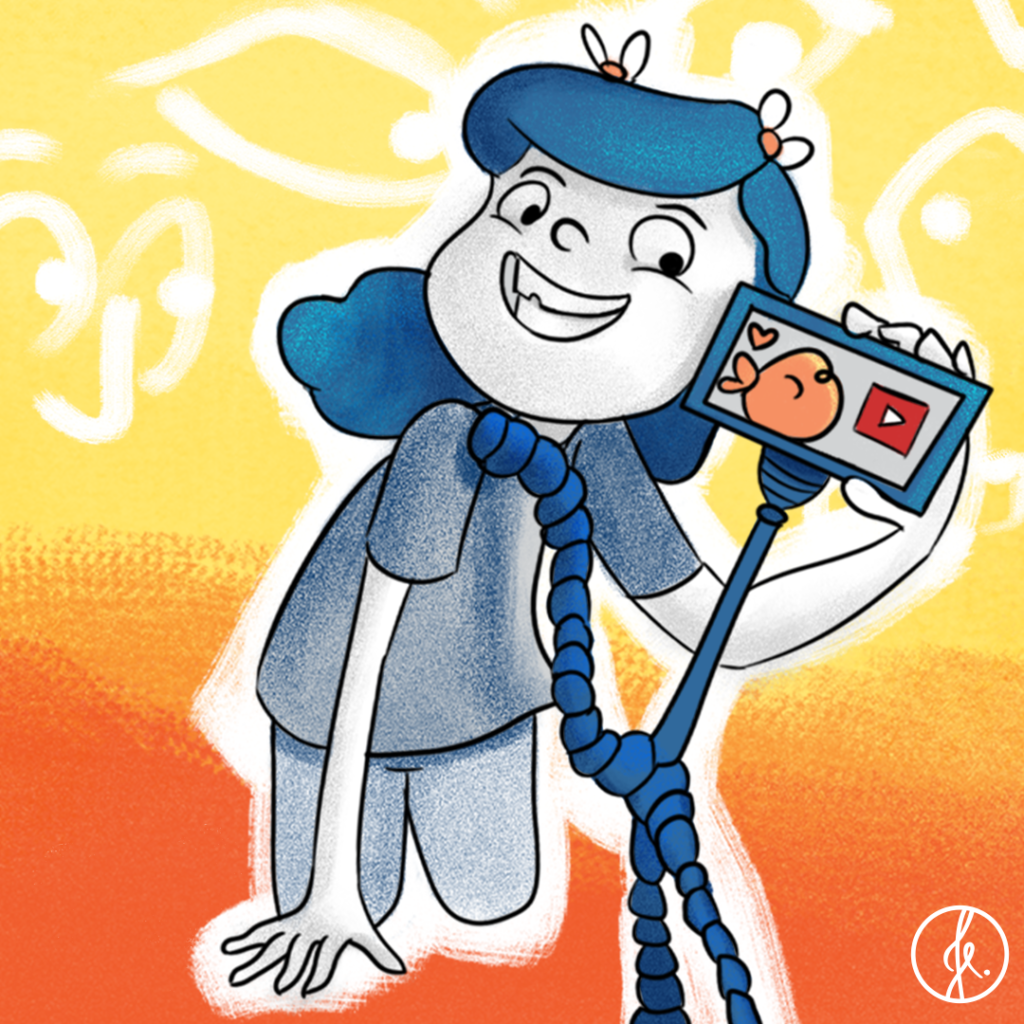[PORT]
Como dizem, crianças precisam de uma comunidade para crescerem saudáveis. O núcleo familiar é a principal referência, mas não a única para criar seres humanos críticos e agentes de mudanças. O contato com outros pequenos ou mesmo com adultos se restringiu com a pandemia, o que levou o núcleo familiar a ter maior potência influenciadora sobre a criança.
Graças à internet acessível nos smartphones, os games, apps, filmes e animações se tornaram uma fuga para entretenimento infantil — e, dentro do momento que vivemos, se tornou um ambiente de novas experiências para os menores. Assim, quero proporcionar aqui um momento para reflexão.
Influenciadores de público infantil ganharam ainda mais destaque, “fazendo parte” das famílias e até sentando-se quase que literalmente à mesa para as refeições, quando os pais permitem que os filhos assistam aos influencers enquanto comem. Com atividades diferentes a cada dia, eles cativam milhões de seguidores, e graças aos encantos das edições, transformam a vida em reality shows com muito drama e emoção. São personagens construídos com a própria vida. A maioria dos jovens quer ser youtuber para ganhar infinitos brinquedos e viagens toda semana.
Entretanto, as crianças precisam ter diferentes estímulos para poderem se desenvolver emocionalmente. Elas não têm senso de análise crítica, e suas atitudes dependerão do que for proporcionado pelas pessoas ao seu redor e seu ambiente de convívio. Nas histórias, há símbolos e personagens que agem no inconsciente, atuando pouco a pouco para ajudar a resolver conflitos interiores. Esse relacionamento com a fantasia facilita que a criança compreenda certos valores básicos da conduta humana ou do convívio social. Identificando-se com os personagens, elas personificam seus problemas infantis e desejos, o que contribui para que alcancem seu equilíbrio adulto. O fenômeno de amadurecimento com personagens é facilmente encontrado em filmes, animações e jogos.
Segundo Bruno Bethelhein, no livro Psicanálise dos Contos de Fadas “Para que uma história realmente prenda a atenção da criança, deve entretê-la e despertar sua curiosidade. Mas para enriquecer sua vida, deve estimular-lhe a imaginação: ajudá-la a desenvolver seu intelecto e a tornar claras suas ansiedades e aspirações, reconhecer plenamente suas dificuldades e, ao mesmo tempo, sugerir soluções para os problemas que a perturbam. Resumindo, deve de uma só vez relacionar-se com todos os aspectos de sua personalidade — e isso sem nunca menosprezar a criança, buscando dar inteiro crédito a seus predicamentos e, simultaneamente, promovendo a confiança nela mesma e no futuro” (p. 5).
A curadoria dos conteúdos direcionados a crianças sempre teve o seu maior peso sobre o núcleo familiar. Ao longo dos anos, tanto elas quanto os adultos tomaram confiança no material produzido por canais populares. Antes de fechar um negócio ou realizar uma compra para consumo próprio, adultos têm por hábito consultar tanto canais no YouTube quanto influenciadores digitais. Consequentemente, as crianças acabam desenvolvendo um comportamento semelhante para consumir entretenimento, assistindo, por exemplo, a vídeos de influenciadores infantis. Porém, deve-se lembrar que criança é um indivíduo em formação de valores e não tem discernimento para distinguir conteúdos como falsos ou verdadeiros, muito menos em situações complexas. Dependendo da idade, o jovem não consegue identificar o que é ou não real.
Conteúdos infantis devem ser bem estruturados, visando estimular e respeitar o progresso emocional. O distanciamento da realidade permite experimentações, e esta fantasia ajuda no amadurecimento emocional. Por meio dos conteúdos online as crianças têm a oportunidade de vivenciar novas experiências externas ao seu principal vínculo familiar. É uma oportunidade única pela qual a humanidade está passando, e merece atenção. Com o alto fluxo de vídeos, o mundo externo é apresentado aos montes — em formatos editados e em quantidade infinita — sendo possível, ainda, facilmente repetir inúmeras vezes o conteúdo mais atrativo. Quem tem criança por perto já deve ter decorado uma música de abertura e falas ou brincadeiras dos seus personagens e youtubers favoritos. Em histórias de filmes e séries, é possível identificar esta curadoria com mais facilidade. Mas será que o material produzido de forma expressa terá esta qualidade?
Para o desenvolvimento de games, apps, filmes e animações, são necessárias equipes com os mais diversos profissionais. De forma geral, independente do estúdio, cada produto direcionado às crianças possui diversos especialistas de diferentes áreas analisando o material até que fique pronto. Para ilustrar esse processo, recomendo conferir um infográfico bem interessante da pipeline da Pixar disponível aqui. Há empresas que criam materiais bem formatados, lembrando muito o processo de criação de produções para a televisão.

Quem cresceu no auge da TV Cultura com produções infantis, conheceu trabalhos como Rá-Tim-Bum, Glub Glub e Castelo Rá-Tim-Bum, onde cada material era estudado e tinha como base a pedagogia infantil. Para muitas famílias, a televisão era o primeiro contato com a escola, uma oportunidade para as crianças que não tinham acesso à educação formal. Se formos fazer um comparativo, não fica muito diferente do que vivemos hoje, situação na qual muitas crianças menores não estão indo à escola por conta da Covid-19.

Dada esta reflexão, pode-se dizer que a produção praticamente diária de conteúdos por influencers e suas equipes enxutas dificilmente consegue ter o crivo de atenção para produzir a alta quantidade de material que a demanda exige. Torna-se uma novela da vida real, e as crianças ficam “presas na bolha” da “riqueza” que as redes sociais podem trazer.
Crianças precisam se identificar em uma comunidade e crescer na pluralidade, com a orientação das pessoas de confiança. Na vida online não pode ser diferente. É preciso diversificar as brincadeiras, sempre tendo atenção à curadoria dos conteúdos pelos responsáveis.
Curtiu este post? Compartilhe!
________________________________________________________________________________________________________________
[ENG]
Games, animations and children’s influencers in times of pandemic
As they say, children need a community to grow up healthy. The nuclear family is the most important, but not the only, reference point for producing critical people and agents of change. Contact with other children or even adults was limited by the pandemic, which meant that the nuclear family had a greater impact on the child.
With the internet accessible through smartphones, games, apps, movies and animation have become an escape for children’s entertainment – and in today’s world, an environment of new experiences for children. So I’d like to offer a moment for reflection here.
Influencers for kids have become even more prevalent, becoming “part” of families and even almost literally sitting at the table at mealtimes as parents allow their children to watch influencers eat. With daily changing activities, they captivate millions of followers and with the charm of spending, they turn lives into reality shows with lots of drama and emotions. They are characters built with life itself. Most young people want to become Youtubers to get endless toys and trips every week.
But kids need other motivations to develop emotionally. They have no sense of critical analysis, and their attitudes depend on what the people around them and their living environment provide. In fantasy stories there are symbols and characters that operate in the unconscious and gradually help to resolve inner conflicts. This relationship with fantasy makes it easier for the child to understand certain basic values of human behavior or social interaction. By identifying with the characters, he embodies his childhood problems and desires, which helps him find his balance as an adult. The phenomenon of maturing with characters is easily found in movies, animation and games.
According to Bruno Bethelhein, in the book Psychoanalysis of Fairy Tales “For a story to truly capture a child’s attention, it must entertain them and pique their curiosity. But to enrich her life, it must stimulate her imagination: it must help her to develop her intellect and make clear her fears and longings, to see fully her difficulties and at the same time suggest solutions to the problems that plague her. In short, she must relate to all aspects of her personality at once-and she must do this without ever underestimating the child, trying to do full justice to her predicaments while fostering confidence in herself and in the future” (p. 5 ).
The curation of content aimed at kids has ever had its greatest weight in the nuclear family. Over the years, both they and adults have come to trust the material produced by popular channels. Before making a deal or making a purchase for their own consumption, adults have a habit of watching YouTube channels as well as digital influencers. Consequently, children develop similar behaviors to consume entertainment, such as watching videos from children’s influencers. However, it should be remembered that a child is an individual in value formation and does not have the discernment to identify content as false or true, let alone in complex situations. Depending on the age, the young person may not be able to distinguish what is real and what is not.
Content for children needs to be well structured and aimed at encouraging and respecting emotional development. The absence of reality allows for experimentation, and this imagination helps with emotional maturation. Through online content, children have the opportunity to have new experiences outside of their main family connection. It is a unique opportunity that humanity is going through, and it deserves attention. With the high flow of videos, the outside world is presented in droves – in edited formats and in infinite quantity – and it’s also possible to simply repeat the most engaging content over and over again. Anyone with a child knows the opening song and speeches or games of their favorite characters and YouTubers by heart. With movie and series stories, this curation is easier to see. But will the rush-produced material have that quality?
Game, app, film and animation development requires teams of diverse professionals. Generally speaking, regardless of the studio, any product aimed at children will have multiple experts from different fields analyzing the material until it’s ready. To illustrate this process, I recommend taking a look at a very interesting infographic about Pixar’s pipeline, which you can find here. There are companies that create well-prepared material reminiscent of the process of creating television productions.

Those who grew up watching children’s productions at the height of TV Cultura saw works such as Rá- Tim-Bum, Glub Glub and Castelo Rá- Tim-Bum, where every material was studied and based on children’s pedagogy. For many families, television was the first contact with school, an opportunity for children who did not have access to formal education. If we make a comparison, it is not very different from what we see today, a situation where many younger children do not go to school because of Covid-19.

Given these considerations, it’s fair to say that the practically daily production of content by influencers and their lean teams can hardly muster the attention to produce the large amount of material that demand requires. It becomes a veritable soap opera, and kids get “trapped in the bubble” of the “riches” that social media can bring.
Children need to identify themselves in a community and grow in plurality, with the guidance of people they trust. In online life, it can be no different. It is necessary to diversify the games, always paying attention to the curation of content by those in charge.
Did you like my post? Shere with your friends =]



Deixe um comentário